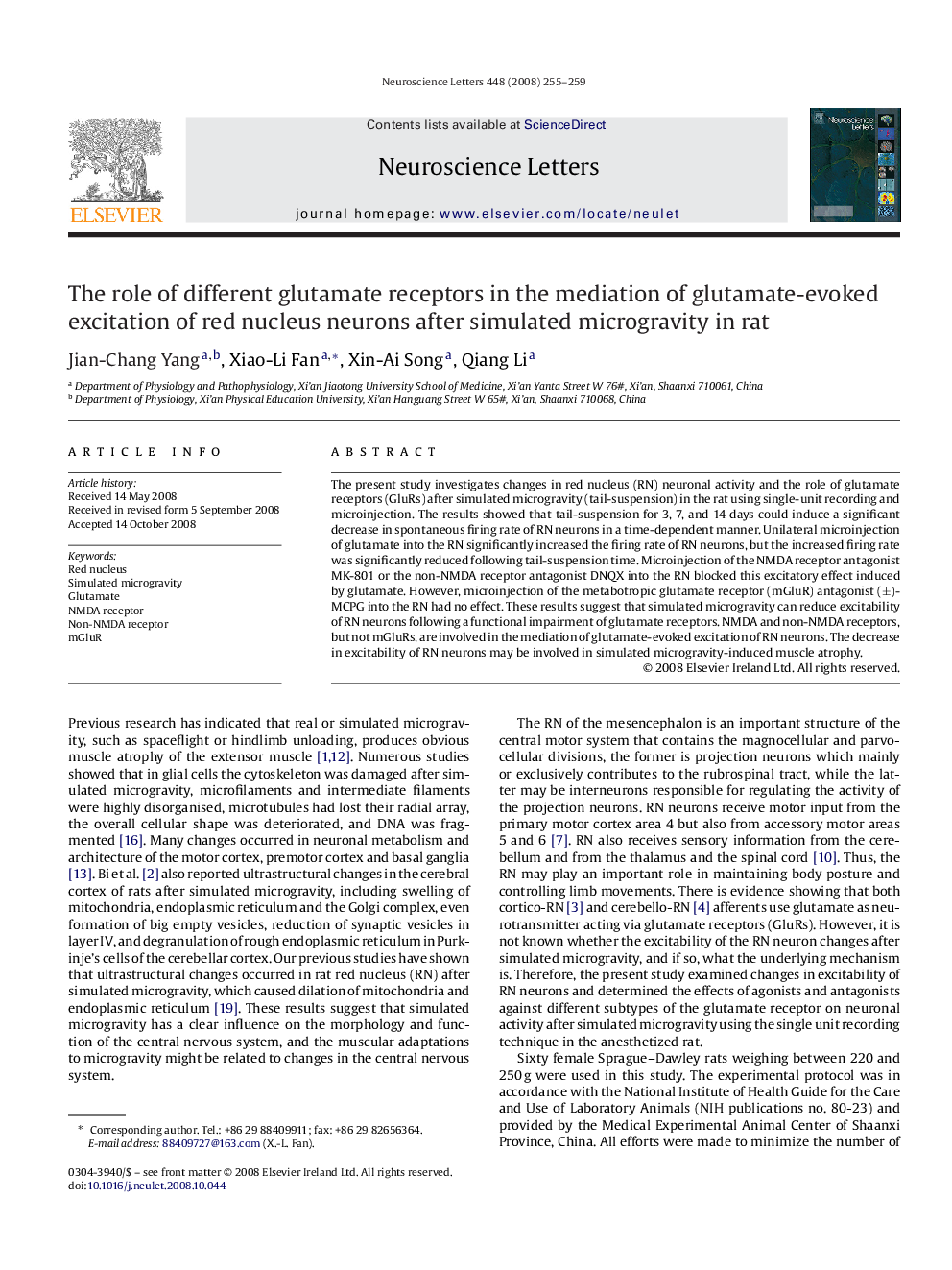| Article ID | Journal | Published Year | Pages | File Type |
|---|---|---|---|---|
| 4347581 | Neuroscience Letters | 2008 | 5 Pages |
Abstract
The present study investigates changes in red nucleus (RN) neuronal activity and the role of glutamate receptors (GluRs) after simulated microgravity (tail-suspension) in the rat using single-unit recording and microinjection. The results showed that tail-suspension for 3, 7, and 14 days could induce a significant decrease in spontaneous firing rate of RN neurons in a time-dependent manner. Unilateral microinjection of glutamate into the RN significantly increased the firing rate of RN neurons, but the increased firing rate was significantly reduced following tail-suspension time. Microinjection of the NMDA receptor antagonist MK-801 or the non-NMDA receptor antagonist DNQX into the RN blocked this excitatory effect induced by glutamate. However, microinjection of the metabotropic glutamate receptor (mGluR) antagonist (±)-MCPG into the RN had no effect. These results suggest that simulated microgravity can reduce excitability of RN neurons following a functional impairment of glutamate receptors. NMDA and non-NMDA receptors, but not mGluRs, are involved in the mediation of glutamate-evoked excitation of RN neurons. The decrease in excitability of RN neurons may be involved in simulated microgravity-induced muscle atrophy.
Related Topics
Life Sciences
Neuroscience
Neuroscience (General)
Authors
Jian-Chang Yang, Xiao-Li Fan, Xin-Ai Song, Qiang Li,
